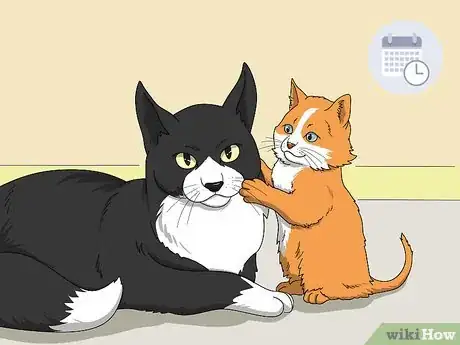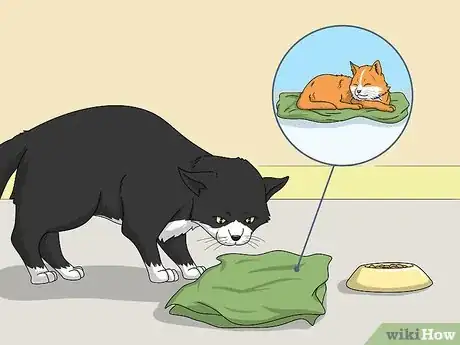This article was co-authored by Rita Reimers and by wikiHow staff writer, Hannah Madden. Rita Reimers is a Cat Behavior Expert and a Co-Founder of Cat Behavior Alliance, a cat behavior consulting service. With over 30 years of experience as a multi-cat owner and cat rescue worker, Rita specializes in helping people better understand cats and find solutions to behavior issues. She received a BS in Computer Science and Personnel Relations Management and studied at the Animal Behavior College. Rita co-hosts a radio show on Pet Life Radio, “19 Cats and Counting,” and co-hosts a YouTube series, “Let’s Talk Cats.” She is also the co-author of the cat behavior blog, “Kitty Korner” for Litter Genie. Rita also writes for “A New Cattitude” for Catster Magazine, and is a contributor to be.Chewy.com. She is a supporting member of the International Association of Animal Behaviorists (IAABC).
This article has been viewed 11,109 times.
Bringing a new kitten home is super exciting! But introducing them to your older cat can be a little nerve-wracking. As long as you go slowly and listen to your cats’ needs, you can keep them both safe and happy in your home. We’ve answered your questions about introducing your cats so they can learn to live in harmony as fast as possible.
Steps
How do I introduce my cats for the first time?
-
1Introduce them with a barrier in place. Put up a baby gate or a mesh screen and let your cats look at each other through it. Don’t allow contact just yet—instead, let them sniff each other and meow if they’d like to. Keep the interactions short (a few minutes is fine), and try to end them on a positive note. Do this a few times over a few days until your cats seem like they’re getting along.[4]
-
2Supervise their initial contact. When you feel confident that your older cat won’t attack the kitten, open the door and let them meet face to face. Stay in the room with them, and let them sniff each other if they’d like to. Keep these interactions short, too, and do them a few times a day for at least a week.[5]
What do I do if my older cat hurts the kitten?
-
1Make a loud noise to break them up. Reaching into an ongoing cat fight will only get you hurt, so it’s important to do this first. You can clap, yell, or stomp to get your cats to break contact before you step in.[7]
-
2Separate the cats right away. If they’re attacking each other, the meeting isn’t going well. Put the kitten back in their separate space and let the cats have some alone time. You might need to backtrack your progress a bit—if you were letting the cats meet each other without barriers in place, try putting a gate up again and letting them sniff each other.[8]
References
- ↑ https://1stpetvet.com/6-tips-for-introducing-a-new-kitten-to-your-resident-cat/
- ↑ https://www.bluecross.org.uk/pet-advice/introducing-cats
- ↑ https://www.humanesociety.org/resources/introducing-pets
- ↑ https://www.bluecross.org.uk/pet-advice/introducing-cats
- ↑ https://www.humanesociety.org/resources/introducing-pets
- ↑ https://www.americanhumane.org/fact-sheet/introducing-cats-to-cats/
- ↑ http://www.animalplanet.com/pets/how-to-introduce-a-new-cat-to-an-old-cat/
- ↑ http://www.animalplanet.com/pets/how-to-introduce-a-new-cat-to-an-old-cat/
- ↑ https://spca.bc.ca/faqs/%E2%80%8Bhow-introduce-new-cat-old-cat/

































































